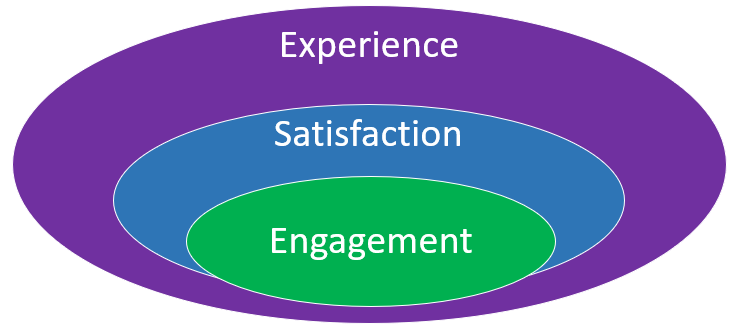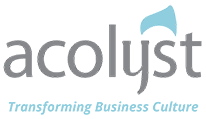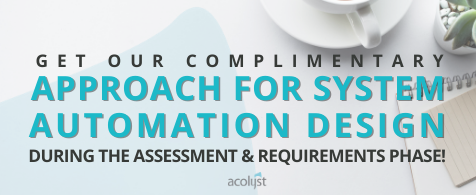Acolyst’s Solution Innovation Center
15 years ago, the Acolyst Solution Innovation Center, a center-fold feature in CRN Magazine as The Anatomy of a Solution Center, was designed as a proof-of-concept and innovative design thinking collaborative hub.
The center was supported and sponsored by several manufacturers including CA Technologies, Intel, SAP, Sony, Cisco, IBM, HP and 14 other vendors

“The Anatomy of a Solution Center”, CRN Magazine centerfold feature, Oct 2006
Activities included:
• Transition and Transformation Strategy Initiatives (included MSP & Data Center)
• Demo, Team-Building Training, Joint Idea and Brainstorming Sessions, and other Activities
• Invited Customers to Meaningfully Collaborate on End User Experience, Customer Satisfaction, and Adoption of Technology (ex: SBA CIO Office)

Today, Acolyst’s Innovation Center focuses on leveraging mastermind practices to innovate, integrate, and invent. We do this through the effectiveness of empowering innovative thoughts and enabling new solutions. Such topics might include:
• Motivating and promoting innovative ideas and evolutionary thinking
• Fostering continuous improvement and expansion
• Building collaborative teamwork for manageability and scalability practices
• Connecting to emotional intelligence
• Practicing awareness, understanding, flexibility, and empathy
• Promoting transparency, trust, and commitment
When working with our clients, our primary focus is to take on an active role to encourage engagement and inclusiveness among parties involved.
The customized program post assessment is designed to elevate innovative problem-solving solutions and draw on the strengths of each member participant to identify and achieve common goals. It is a means for the stakeholders to identify a specific set of expectations that foster good communication, teamwork, and collaborative problem solving from the start of the relationship to the project’s completion.
Goal is to develop innovative ways that create added value to improve the quality of performance and increase productivity.
We accomplish this by focusing on the user journey.
Compartmentalizing the User Journey
- User Engagement at the onset of the journey
- User Satisfaction as the present journey moment
- User Experience as they reflect on the journey memory (current / past)

Three E Model™ for Tangible and Visible Culture
For years, the industry has struggled with mapping and measuring the intangible and invisible cultural change. Acolyst’s Valeh Nazemoff brings to light of “how things are done” by making cultural change visible and tangible for adaptive and innovative change through her groundbreaking Three E Model™ (3E Model™) referenced in her latest book, Supercharge Workforce Communication. Her work focuses on reshaping mindsets to optimize digital transformation adoption.
The Three E Model™ is a mindset model that addresses cultural change, adoption of technologies, new capabilities, self-service, and automation, by pulling elements together to streamline conversations. The 3E’s, which is inclusive of three focus groups, are:
- Internal Efficiency
- Internal Effectiveness
- External Effectiveness

This model is used to address the related behavioral engagements aligned with strategy. Thus, making suggestions for how to achieve necessary cultural changes to thrive.
• Internal Efficiency is equivalent to Operational Cooperation. Communicating value and demonstrating improvements with responsiveness, cost, resources, technology, and more.
• Internal Effectiveness is about Business Collaboration. Addressing the performance gaps in integrated solutions as it relates to uncoordinated, separate, disconnected, duplicative, and inconsistent data. Dealing more with automation to optimize end-user effectiveness. Re-examination of business models, processes, and adopting new workforce approaches.
• External effectiveness means Strategic Coordination. Leveraging market differentiators for innovative solutions.
When there are three streamlined conversational focus areas for a specific technology solution, program activity, or best practice standard initiatives, a shift will occur in addition to 1-3 behavioral engagements.

Fusing Three E Model™ with the User Journey for Success
- Three E Model™
- Compartmentalizing Integrated and Interconnected User Journey

Process of Cultural Change Measures, Metrics, and KPIs
Author Seth Godin reminds us that “what you measure usually gets paid attention to, and what you pay attention to, usually gets better.”
Acolyst’s Cultural Measure Strategy Formula (CMSF) strategically and carefully crafts measures, metrics, and KPIs to be tangible and visible, to some degree, for cultural change by applying some of the following ingredients:

• Purpose, intention, and vision
• Target and goals
• Values, interests, and positions
• Clear definitions
• Risks, challenges, and pain points
• Shared mindsets, beliefs, and assumptions
• Group norms
• Communication mechanisms
• Satisfaction, engagement, experience reports
• Existing cultural similarities and differences
• History and current state
• Attitudes, style, and cognitive behavior
• And more…
Let’s Zoom and/or Inquire to Get Results! Connect with us HERE.

